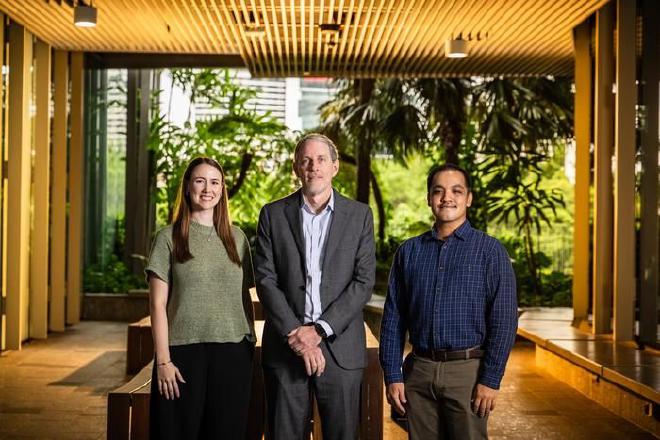

The report, published by researchers from QUT and the ARC Centre of Excellence in Synthetic Biology, Madeline Smith, Dr Jerome Ramirez and Professor Ian O’Hara, says “now is the time for Australia to act, or risk losing the ability to compete in this rapidly growing global market”.
Professor O’Hara said the global bioeconomy, currently valued at US$4 trillion, was predicted by the World Bioeconomy Forum to grow to US$30 trillion by 2040, which would be a third of total global economic value.
Many countries, including most of the G20 economies, have already developed national bioeconomy strategies that are providing a focal point for coordinated government action unlocking corporate investment.
“Without a unified effort and strategic approach by government, industry and researcher partners, Australia risks losing the opportunity to compete effectively in this market,” Professor O’Hara said.
“Our world-class research, education and innovation are key strengths that can underpin advancing Australia’s bioeconomy development.”
The report identifies key economic growth opportunities for Australia including biomanufacturing of sustainable products and materials, value-adding to Australia’s primary industries, the development of new foods and feeds and the manufacturing of low carbon liquid fuels and renewable gases.
“As examples, Australia is at the forefront of developing new food ingredients including proteins produced through precision fermentation and has the potential to lead in the development of sustainable aviation fuels from agricultural industry byproducts,” Professor O’Hara said.
“Australia has one of the best biomass resources in the world which provides a huge advantage in the development of these industries. By unlocking the value of these resources we can add value to Australian agriculture and grow new biomanufacturing industries across regional areas.”
As an example, the recently upgraded QUT Mackay Renewable Biocommodities Pilot Plant based in the Greater Whitsundays Region of Queensland is supporting the sugar industry to diversify into a wider range of value-added products, however more focus is needed on this very important aspect of technology scale-up and translation.
The report makes five key recommendations to advance Australia’s bioeconomy:
Develop a national bioeconomy strategy: Assess capabilities, prioritise growth and identify strategies for market, workforce and regional benefits.
Cultivate world-class, economic and scalable bioeconomy feedstock: Invest in feedstock development and optimise farm-to-market supply chains.
Build infrastructure to scale bioeconomy solutions: Fund pilot and pre-commercial biomanufacturing infrastructure.
Grow bioeconomy workforce skills: Expand education and training programs with a focus on regional development.
Invest in bioeconomy research, development and translation: Establish large-scale collaborative research programs.
The report identifies the key opportunities for the Australian bioeconomy to diversify revenue streams within primary industries and agribusinesses through onshore value-adding and developing emerging industries and new markets within a low-carbon future.
- The article Growing Australia’s Bioeconomy was published on QUT’s website.

